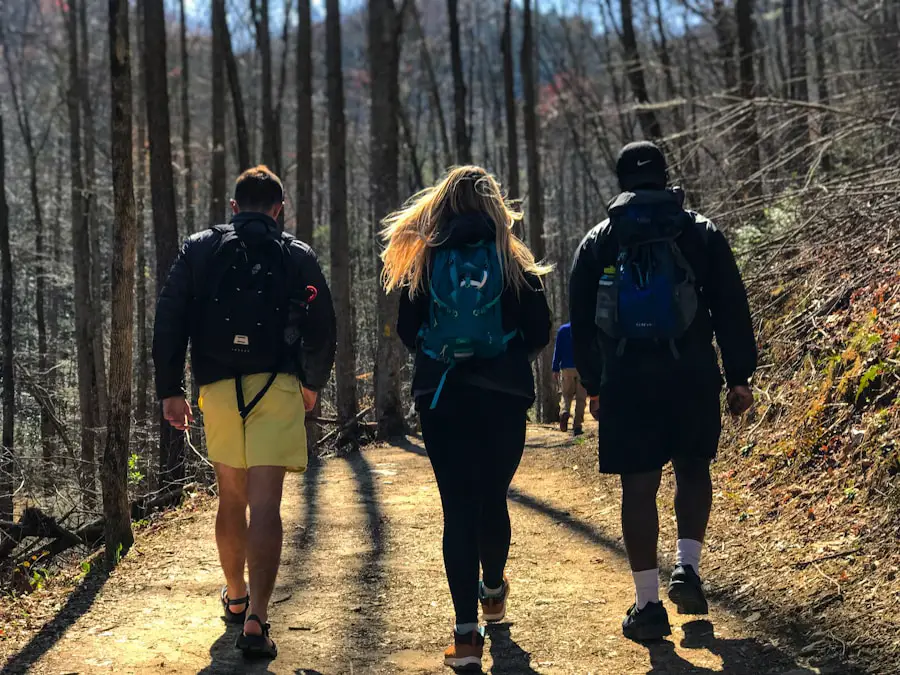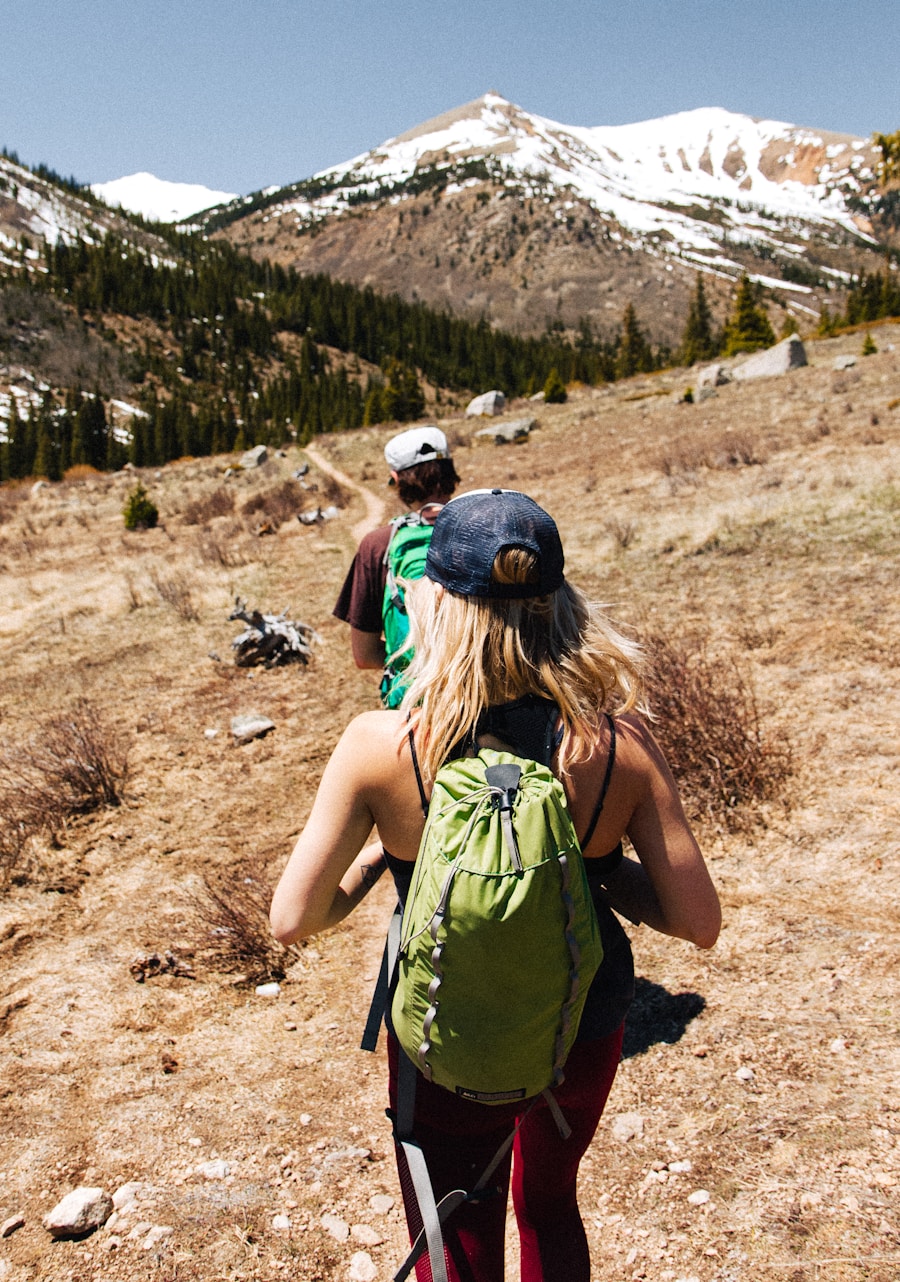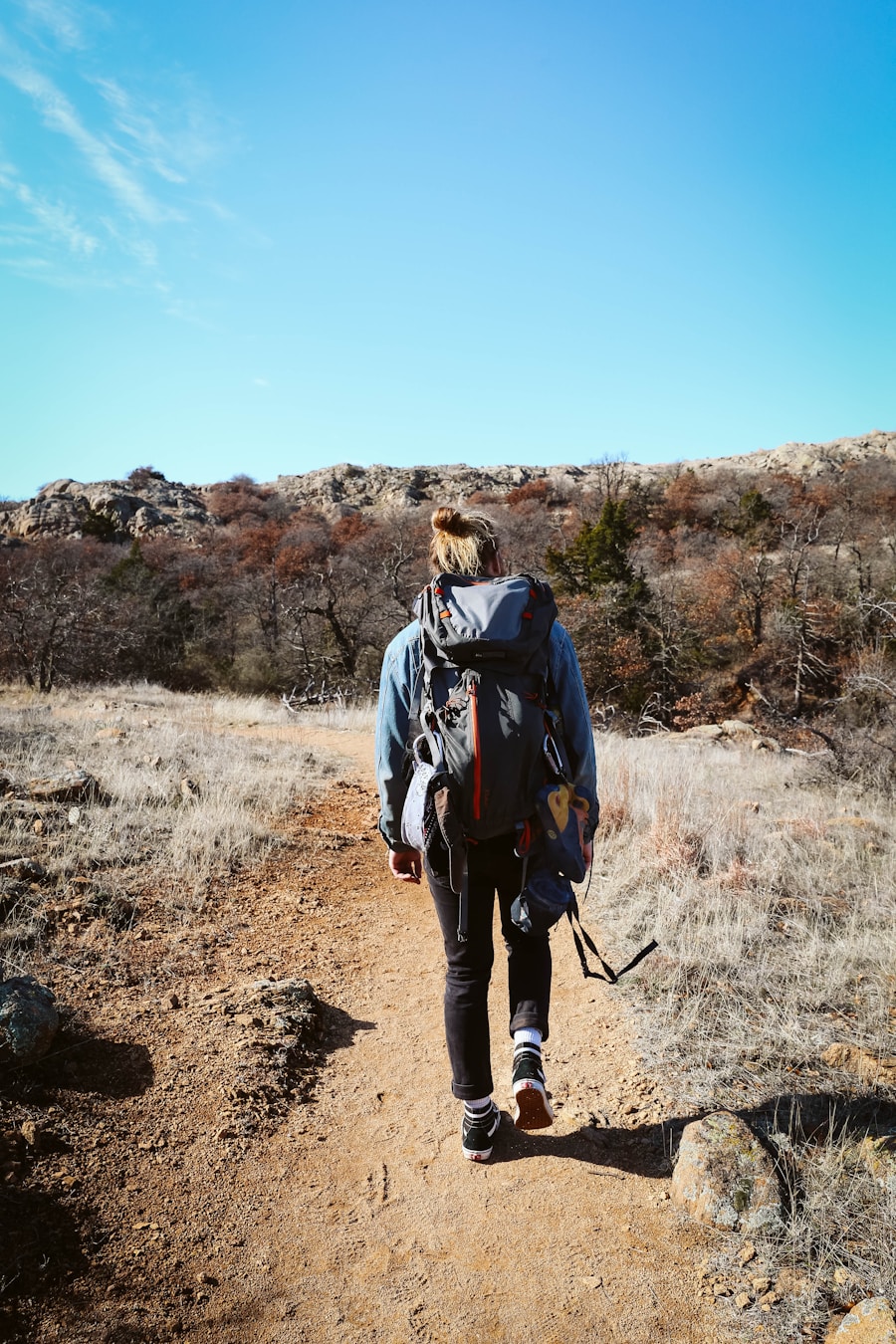Hiking is a multifaceted activity that offers a plethora of physical benefits, making it an excellent choice for individuals seeking to enhance their overall health and fitness. Engaging in this outdoor pursuit provides a full-body workout that can improve cardiovascular health, strengthen muscles, and increase flexibility. When traversing varied terrains, hikers engage different muscle groups, from the calves and quadriceps to the core and upper body.
The act of climbing inclines and navigating uneven surfaces not only builds strength but also enhances balance and coordination. Studies have shown that regular hiking can lead to significant improvements in cardiovascular endurance, which is crucial for reducing the risk of heart disease and other related conditions. Moreover, hiking serves as an effective means of weight management.
The number of calories burned during a hike can vary significantly based on factors such as terrain, elevation gain, and the hiker’s weight. On average, a person weighing around 160 pounds can burn approximately 430 to 480 calories per hour on moderate trails. This calorie expenditure can contribute to weight loss or maintenance when combined with a balanced diet.
Additionally, hiking can improve bone density due to the weight-bearing nature of the activity, which is particularly beneficial for older adults who are at risk for osteoporosis. The combination of aerobic exercise and strength training makes hiking a comprehensive workout that promotes long-term physical health.
Key Takeaways
- Hiking improves cardiovascular health, strengthens muscles, and boosts bone density
- Hiking reduces stress, anxiety, and depression while improving mood and mental clarity
- Hiking fosters a sense of community, encourages teamwork, and promotes social interaction
- Hiking helps to preserve natural landscapes, supports conservation efforts, and reduces carbon footprint
- Hiking provides a sense of connection to nature, promotes mindfulness, and encourages self-reflection
The Mental Health Benefits of Hiking
Disconnecting from Daily Life
Immersing oneself in nature has been shown to reduce cortisol levels, the hormone associated with stress. The tranquility of natural settings allows individuals to disconnect from the hustle and bustle of daily life, providing a much-needed respite for the mind.
Improved Mood and Well-being
Research indicates that spending time outdoors can lead to improved mood and increased feelings of well-being. The sights and sounds of nature—such as rustling leaves, chirping birds, and flowing water—can have a calming effect, promoting mindfulness and presence in the moment. Furthermore, hiking can serve as a form of moving meditation.
Enhanced Creativity and Emotional Resilience
The rhythmic nature of walking combined with deep breathing allows individuals to clear their minds and focus on their surroundings. This meditative aspect can lead to enhanced creativity and problem-solving skills, as the brain is given space to wander and explore new ideas. Many hikers report experiencing a sense of clarity and inspiration during or after their hikes. Additionally, studies have shown that engaging in outdoor activities like hiking can alleviate symptoms of anxiety and depression, making it a valuable tool for mental health management. The combination of physical exertion and exposure to nature creates a powerful synergy that fosters emotional resilience.
The Social Benefits of Hiking

Hiking is not only an individual pursuit but also a social activity that fosters connections among people. Whether it’s a casual stroll with friends or an organized group hike, the shared experience of exploring nature can strengthen relationships and build community. Hiking provides an opportunity for individuals to bond over common interests while enjoying the beauty of the outdoors.
Group hikes often encourage conversation and camaraderie, allowing participants to share stories, laughter, and support. This social interaction can enhance feelings of belonging and reduce feelings of isolation. Moreover, hiking clubs and organizations have proliferated in recent years, creating spaces for individuals to meet like-minded outdoor enthusiasts.
These groups often organize regular hikes, workshops, and events that promote not only physical activity but also social engagement. For many people, joining a hiking group can be a gateway to new friendships and social networks. Additionally, hiking with others can enhance safety; having companions on the trail can provide reassurance and assistance in case of emergencies or unexpected challenges.
The social benefits of hiking extend beyond mere companionship; they contribute to a sense of community and shared purpose among participants.
The Environmental Benefits of Hiking
| Environmental Benefit | Impact |
|---|---|
| Reduced Carbon Emissions | Hiking reduces the use of vehicles, leading to lower carbon emissions and air pollution. |
| Preservation of Natural Habitats | Hiking trails help protect natural habitats by promoting conservation and reducing human impact on the environment. |
| Water Conservation | Hiking encourages the preservation of water resources and reduces water pollution by promoting responsible outdoor practices. |
| Improved Air Quality | Hiking in natural environments contributes to cleaner air and reduces the impact of urban pollution. |
| Reduced Waste | Hiking promotes a “leave no trace” ethic, reducing litter and waste in natural areas. |
Hiking is inherently linked to environmental stewardship and awareness. By engaging with nature through hiking, individuals develop a deeper appreciation for the natural world, which can inspire them to become advocates for conservation efforts. As hikers traverse diverse ecosystems, they witness firsthand the beauty and fragility of these environments.
This connection often leads to increased environmental consciousness and a desire to protect natural spaces from degradation. Many hikers become involved in local conservation initiatives or volunteer for trail maintenance projects, contributing positively to their communities. Additionally, hiking promotes sustainable tourism practices that benefit local economies while minimizing ecological impact.
When individuals choose to hike rather than engage in more resource-intensive recreational activities, they help reduce carbon footprints associated with transportation and infrastructure development. Hiking encourages low-impact exploration of natural areas, allowing people to enjoy the outdoors without causing significant harm to ecosystems. Furthermore, many trails are designed with sustainability in mind, incorporating features that protect wildlife habitats and preserve native flora.
By choosing to hike responsibly, individuals play a crucial role in promoting environmental sustainability.
The Spiritual Benefits of Hiking
Hiking offers unique spiritual benefits that transcend physical exercise and mental relaxation. For many individuals, spending time in nature serves as a pathway to spiritual growth and self-discovery. The vastness of the outdoors can evoke feelings of awe and wonder, prompting hikers to reflect on their place in the universe.
This connection to nature often leads to moments of introspection and contemplation, allowing individuals to explore their beliefs and values in a serene setting. Many find that hiking provides an opportunity for personal reflection, enabling them to connect with their inner selves away from the distractions of modern life. Moreover, hiking can facilitate a sense of connection to something greater than oneself.
Whether it’s through witnessing breathtaking vistas or experiencing the tranquility of a forest, many hikers report feeling a profound sense of peace and unity with nature during their journeys. This spiritual aspect can be particularly powerful when hiking alone; solitude in nature allows for deep contemplation and connection with one’s thoughts and emotions. For some, hiking becomes a form of spiritual practice or pilgrimage—a way to seek clarity, purpose, or healing through communion with the natural world.
Tips for a Safe and Enjoyable Hiking Experience

Choosing the Right Trail
One of the most important aspects is choosing the right trail based on your skill level and physical condition. Beginners should start with well-marked trails that offer manageable terrain before progressing to more challenging hikes.
Pre-Hike Checks
It’s also essential to check weather conditions prior to heading out; sudden changes in weather can pose risks such as hypothermia or heat exhaustion. Carrying essential gear such as maps or GPS devices can help prevent getting lost in unfamiliar areas.
Safety Precautions
Another critical safety tip is to inform someone about your hiking plans before you set out. Sharing your itinerary with a friend or family member ensures that someone knows your whereabouts in case of an emergency. Additionally, it’s wise to hike with a buddy whenever possible; having someone by your side not only enhances safety but also enriches the experience through shared moments and support during challenging sections of the trail. Lastly, always carry sufficient water and snacks to maintain energy levels throughout your hike; dehydration can quickly lead to fatigue or dizziness.
Hiking Gear Essentials
Having the right gear is essential for maximizing comfort and safety while hiking. Footwear is perhaps the most critical component; investing in high-quality hiking boots or shoes designed for your specific terrain can prevent blisters and provide necessary support for your ankles. Proper socks made from moisture-wicking materials are equally important in keeping feet dry and comfortable during long hikes.
Additionally, wearing layered clothing allows hikers to adapt to changing temperatures throughout their journey; breathable fabrics help regulate body temperature while providing protection from elements like wind or rain. Other essential gear includes a well-fitted backpack that distributes weight evenly across your body while providing ample storage for supplies such as water bottles, snacks, first aid kits, and navigation tools. A reliable water filtration system or purification tablets are also crucial for longer hikes where access to clean water may be limited.
Sun protection—such as hats, sunglasses, and sunscreen—should not be overlooked either; prolonged exposure to UV rays can lead to sunburn or heat-related illnesses. By equipping yourself with appropriate gear tailored to your hike’s demands, you enhance both safety and enjoyment on the trail.
Exploring Different Types of Hiking Trails
Hiking trails come in various forms, each offering unique experiences that cater to different interests and skill levels. From leisurely walks along flat paths suitable for families with young children to challenging mountain ascents that require technical skills, there is something for everyone in the world of hiking. Nature trails often feature interpretive signs that educate hikers about local flora and fauna while providing opportunities for wildlife observation; these trails are perfect for those looking to connect with nature at a relaxed pace.
For those seeking adventure, backcountry trails offer rugged terrain that requires navigation skills and self-sufficiency. These trails often lead hikers into remote wilderness areas where solitude reigns supreme; however, they demand careful planning regarding supplies and safety measures due to their isolation from amenities like water sources or cell service. Additionally, specialized trails such as long-distance routes—like the Appalachian Trail or Pacific Crest Trail—provide opportunities for multi-day hikes that challenge endurance while rewarding hikers with stunning landscapes along the way.
Each type of trail presents its own set of challenges and rewards, inviting individuals to explore diverse environments while enjoying the myriad benefits that hiking has to offer.
If you enjoy hiking, you may also be interested in exploring the world with a travel scooter. Check out this article on the
